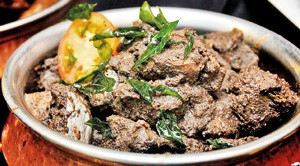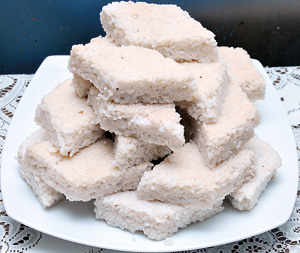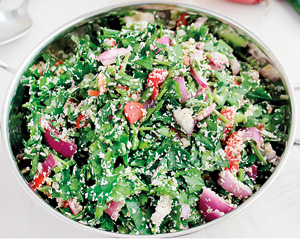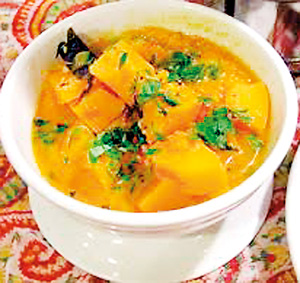Healthy and local, it’s tasty too
View(s): In the first of our 2-part series with the Nutrition Society of Sri Lanka, MediScene brings you a few dishes you should be putting on your family table. Though the Sri Lankan diet can be varied, nutritious and satisfying in its own right, urbanization and our rapidly changing culinary landscape means we’re eating more unhealthy, processed food than ever before. However, what if we were to look to our traditional menu for healthy, tasty options? Here are some great suggestions to get you started.
In the first of our 2-part series with the Nutrition Society of Sri Lanka, MediScene brings you a few dishes you should be putting on your family table. Though the Sri Lankan diet can be varied, nutritious and satisfying in its own right, urbanization and our rapidly changing culinary landscape means we’re eating more unhealthy, processed food than ever before. However, what if we were to look to our traditional menu for healthy, tasty options? Here are some great suggestions to get you started.
 Diya buth (fermented rice)
Diya buth (fermented rice)
This traditional Asian dish was commonly eaten for breakfast in years past and is now somewhat out of fashion – that doesn’t take away from its many benefits however. To make it, brown rice cooked the previous day is soaked in water or coconut water/milk, onion, garlic and chilli and left to ferment overnight at room temperature in a clay pot.Fermentation by bacteria is aided by the addition of onions, which act as a prebiotic, creating an environment that supports the growth of these bacteria. The resulting fermentation creates a dish with a unique, subtly sour flavour. It is traditionally served with a raw onion or green chilli.
 It has many health benefits. Despite the quantities Sri Lankans consume it in, rice is not easily digestible by the gut. This means that the micronutrients that the grains hold are not always absorbed as they make their way through the digestive track. Fermenting rice increases healthy bacteria which produce enzymes that are your gut’s ally – in fact the bacteria have kick-started the process of digestion before you have even chewed on your first mouthful.
It has many health benefits. Despite the quantities Sri Lankans consume it in, rice is not easily digestible by the gut. This means that the micronutrients that the grains hold are not always absorbed as they make their way through the digestive track. Fermenting rice increases healthy bacteria which produce enzymes that are your gut’s ally – in fact the bacteria have kick-started the process of digestion before you have even chewed on your first mouthful.
Once in your system, the bacteria help break down the anti-nutritional factors such as phytates which are usually present in rice, which in turn increase the availability of micro-nutrients and minerals such as iron, potassium and calcium. Over the long run, the presence of these bacteria can contribute to the general health of your gastro-intestinal tract.Hoppers, another product made with fermented rice, also have similar health benefits.
Gotukola sambol
This timeless favourite, a key element in all the best rice and curries, is usually prepared with fresh gotukola, coconut scrapings, lime juice, tomato and pieces of Maldive fish. You may not know it, but this clever (and delicious) combination of ingredients is designed to maximize the nutritional value of its component foods.
 Gotukola, like many other plants, is rich in naturally occurring triterpenoids, which studies have shown are beneficial in combatting several diseases, including various cancers. Their medicinal properties are believed to stimulate wound healing due to their abundance of antioxidants. In addition, gotukola contains some carotenoids, and other phytonutrients which are helpful in preventing chronic diseases. And, since the dish is eaten raw, the phytonutrients are not destroyed by heat. The Maldive fish in the sambol is a source of protein, and this, as well as the lime juice (which contains vitamin C) helps in the absorption of iron from the green leaves, while the coconut scrapings provide some energy and the fibre.
Gotukola, like many other plants, is rich in naturally occurring triterpenoids, which studies have shown are beneficial in combatting several diseases, including various cancers. Their medicinal properties are believed to stimulate wound healing due to their abundance of antioxidants. In addition, gotukola contains some carotenoids, and other phytonutrients which are helpful in preventing chronic diseases. And, since the dish is eaten raw, the phytonutrients are not destroyed by heat. The Maldive fish in the sambol is a source of protein, and this, as well as the lime juice (which contains vitamin C) helps in the absorption of iron from the green leaves, while the coconut scrapings provide some energy and the fibre.
Kiributh (milk rice)
Though associated with festive meals, kiributh (milk rice) is a wonderful meal for all seasons. Cooked with red or white raw rice, it can be enriched by adding green gram, which has been softened after soaking all night in water. A recipe that’s rich in starch, with sugars kicking in from the fat in the coconut means that consuming kiributh can leave you with lots of energy to burn. The coconut milk also provides a type of fat called medium chain triglycerides which are more easily digested than other fats, and generate many health benefits to the digestive system. The addition of green gram, whose digestive properties have been greatly improved by their overnight soak, make this dish healthier by increasing its protein and fibre content.
Rice while having some amino acids, is deficient in a particular amino acid known as lysine. However, green gram is rich in this protein, thus complementing the rice and providing all necessary amino acids to the body. The dish is traditionally served with katta sambol, a mixture of raw onion, chilli and Maldive fish that only adds goodness to the meal. Onions provide probiotics to our gut, which helps the growth of healthy bacteria, while the chilli contains many phytonutrients, which helps fight chronic disease. The Maldive fish serves as a deliciously salty hit of extra protein.
Pumpkin curry
We don’t appreciate the pumpkin as we should. Packed with vitamins and minerals, and especially rich in vitamin A, and flavonoid poly-phenolic antioxidants such as leutin, xanthin, and carotene, this is a super food in its own right. Pumpkin is high in potassium, which makes it heart healthy, a characteristic only complemented by its high fibre content. With less starch than rice or potatoes, amounting to only about 60 kcals per cup of cooked pumpkin, this vegetable is a dieter’s friend. The fibre content also helps to reduce its glycaemic load. Pumpkin curries in Sri Lanka are usually prepared with roasted rice and coconut scrapings onions, green chillies, garlic, curry leaves, fenugreek, turmeric and curry powder.
The roasted rice provides additional energy, and the coconut scrapings, added fibre. The other ingredients provide additional phytonutrients such as antioxidants while the turmeric has anti-inflammatory properties and the mustard seeds add both flavour and the isothiocyanates – the latter which studies have shown helps fight cancer.
Fish ambulthiyal
A perennial favourite, this sour Sri Lankan speciality is typically made with tuna and a number of ingredients including ground goraka (garciniagummi-gutta), pepper, green chilli, garlic, ginger, cinnamon and curry leaves.
This method works out to one of the healthiest ways to prepare fish, since the dish does not require any oil or coconut milk. The condiments used are packed with phytonutrients including flavonoids that are powerful anti-inflammatory and antioxidant agents. The goraka too has many anti-disease properties. Fish has similar levels of protein compared to other animal meats and is a healthier option than chicken, pork or beef, with the added advantage of having less fat.
Fans of ambulthiyal are known to savour the darker meat, pieces which are usually sheared off in other preparations. Fish muscle consists of light and dark muscle, and the dark portion is actually a muscle type that is rich in myoglobin, a blood pigment that has a very high iron content, an essential mineral, compared to that of white flesh in fish. The dark muscle also contains many n-3 polyunsaturated fattyacids (n-3 PUFA), which are heart healthy fats.
Halape
Finally, it’s time for dessert. Many turn to their local kade for servings of halape, a traditional sweet made with kurakkan flour (finger millet), coconut scrapings, mixed with treacle and steamed wrapped in a leaf. It has many health benefits compared to other traditional sweetmeats which are either deep fried or incorporate too much wheat flour and sugar. It helps that the amount of coconut scrapings and treacle used can be varied to suit your palate.
Fibre is very much the hero of this dish. Finger millet has a low glycaemic index and slows absorption of sugars in the digestive tract due to its high fibre content. The high fibre content also contributes to the health of the digestive tract, and the coconut scrapings add even more fibre. The micronutrients thiamine, iron and calcium are all present in finger millet. Of all the cereals and millets, finger millet has the highest amount of calcium and potassium.
Halape is usually eaten with a banana and this adds to the health benefits since bananas are high in potassium, which is healthy for the heart, and soluble fibre which is gut healthy.


